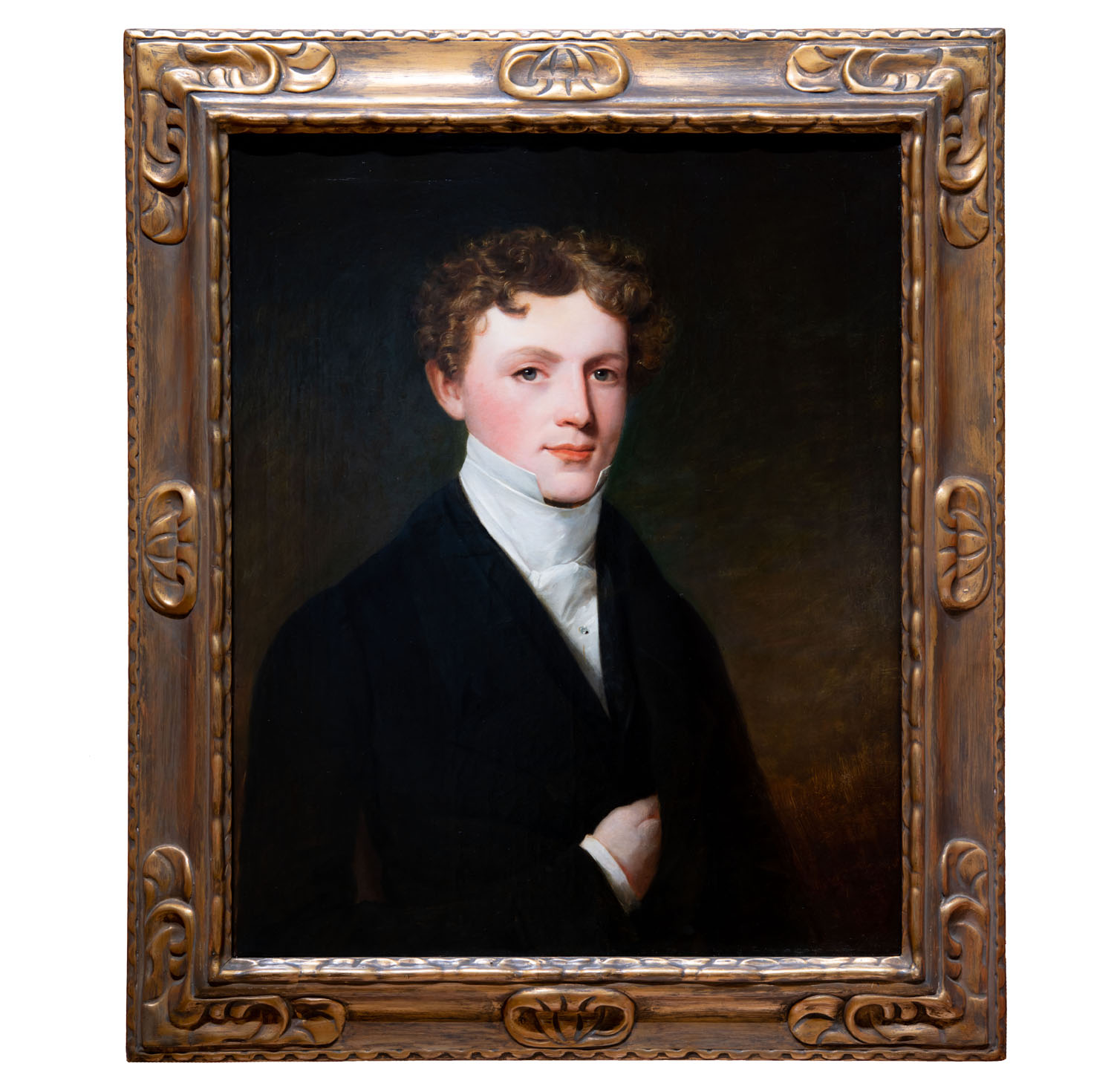Dr George Shaw M.B.
The history of a man and his portrait.
Published: 29 June 2021
Dr George Shaw M.B., Med Lic: M.D., (Cantab). F.R.C.P., (Lond.). JP (1801-1888)
John A. Shaw Pollard M.A., L.D.S., has researched Dr Shaw for a book and has kindly written the following brief account of his life and the portrait’s history as far as we know it.
Dr George Shaw was the younger of two brothers born to George Shaw, a surgeon of Halifax, in Yorkshire. They both attended Heath Grammar School in Halifax before going up to Cambridge University (Gonville & Caius). Edward Butterworth Shaw (the elder brother) would enter Holy Orders, and after serving in Halifax, Salford and Manchester, he was appointed Rector of All Saints in Narborough, Leicestershire. George followed on the same path except that he was to read medicine, in which he had an illustrious career.

Portrait of Dr Shaw, M.D.
The painting, now beautifully restored, [1] was donated to the New Walk Museum in 1966 by Miss Irene Gertrude Browning. The correspondence (on file) tells us that the portrait was carried out whilst Dr Shaw was in Italy helping to create a new hospital there during his training. She had inherited the painting from a Miss Catherine Flude. The name Flude was known to us as Dr George’s housekeeper was Eliza Flude. She had been in attendance from at least 1851 (George’s wife Julia died in 1845). Catherine Flude was Eliza’s niece, the daughter of Eliza’s brother William Flude. The census of 1911 shows that Catherine Flude is head of the household (Eliza has died in 1901). Also listed are her Aunt Jane Flude, her cousin Ella Jane Flude and Minnie Eugenie Browning (companion nurse), Minnie’s daughter Irene Gertrude Browning (aged 15yrs) is listed and is attending school. By 1923, both Catherine Flude and Minnie Eugenie Browning have moved down to Bournemouth. They continue to live here until the census of 1939 when we find that Catherine Flude, Minnie Eugenie Browning and the Misses Browning (Irene and Kathleen) are all together at 30 Dunkeld Road, Bournemouth CB, Hampshire. Researching the last Will and Testaments of the above-named ladies, we can with certainty suggest how the portrait came into the possession of Irene Gertrude Browning.
George Shaw’s Portrait.
- to Eliza Flude
- to Catherine Flude
- to Irene Gertrude Browning
- the sisters – Irene & Kathleen Browning
- to the New Walk Museum
Unfortunately, the artist’s name and the date of the painting are unknown, but we can estimate from the dates of his qualifications and from the limited information on the reverse of the painting,[2] that it would be circa. 1829.
Initially, George Shaw followed his brother Edward to Manchester. Here, he was in private practice as well as being involved with the early teaching of medicine in Manchester. Among his earliest experiences was the horrendous outbreak of cholera in that town, (not a city until 1853) in 1832, when he was responsible for the Swan Street Hospital, a converted three-storey factory, or workshop. His residence was at 32 Mosely Street.
George, together with his wife Julia, came to Leicester in late 1834 when he is seen to be the occupier of a house in Belgrave Gate. He moved to New Street in late 1836. In 1835, together with Alfred Paget (Solicitor), the Leicester Literary and Philosophical Society was formed.[3] From the outset, one of the objectives was to form a Museum and this led in 1849 to Leicester Museum & Art Gallery opening as one of the public museums in the country, with the original building being designed by Joseph Hansom, designer of the Hansom cab.
In 1840, George Shaw was appointed Senior Physician (Leicester Infirmary) on the retirement of Dr William Withering Arnold. He was active in medical and nursing training. He held this post until his retirement in 1870. As well as his hospital duties, Dr Shaw was in private practice in New Street and among his patients and friends were the Duke of Rutland, Earle Howe and the King’s Physician, Sir Henry Halford.
George Shaw was a man of immense intellect and vision, and he was held in high regard throughout Leicester. Truly, a worthy citizen of Leicester. He is interred in the chancel of Leicester Cathedral.
[1] My Cousin George: A Worthy of Halifax Manchester & Leicester.
[2] Conserved by Annette Monaghan during 2021.
[3] A duty stamp appears on the reverse (almost illegible), so it is likely that it was painted before 1831, as canvas in Britain was subject to a duty stamp up until this date. There is also a colourman’s supplier stamp that reads ‘J Middleton’. The Middletons were leading artists suppliers in London. Perhaps the portrait was painted by a British artist who took his own supplies with him from Britain?
[4] Dr Shaw was acting Chairman of the Leicester Literary & Philosophical Society in 1835-36 and President in 1838-39, 1845-46, 1850-51 and 1884-85.
